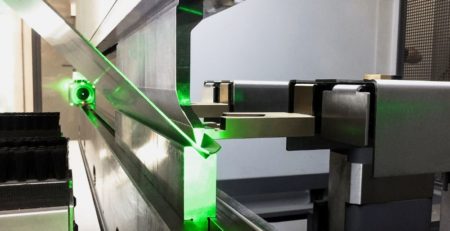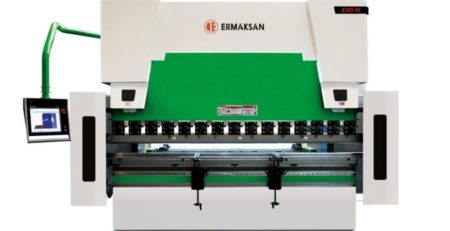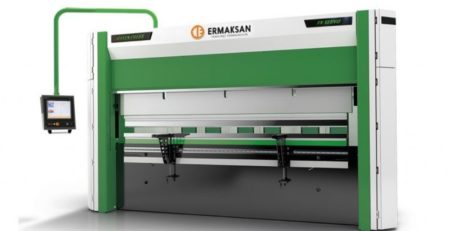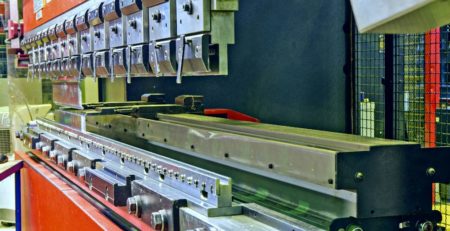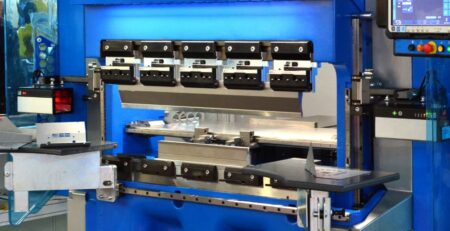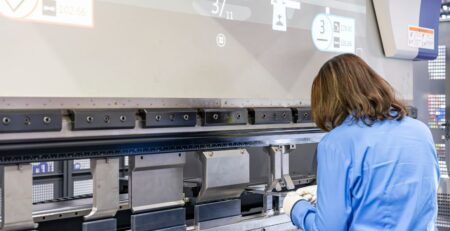Ways To Improve the Function of Your Press Brake
With advancements in technology and machining processes, it is more important than ever to adopt modern methods of pressing and bending sheet metal to optimize productivity and minimize waste. Learn ways to improve the function of your press brake.
Improve Setup Time
Setting up for any task can be time-consuming, and if you’re not careful, it can eat into your productivity for the day. Luckily, there are ways to improve your setup time and get started on your work faster.
First, carefully observe each step of the press brake setup process to identify the steps that take the most time and whether there are any steps you can eliminate from the process. Second, consider your shop’s floor plan and how you could improve it to make sure you have all the tools and materials you need within reach. Lastly, consider if there are any ways you can automate parts of the setup process. By implementing these strategies, you’ll find that you have more time and energy to devote to your actual work.
Program Offline
Save time by programming offline. Doing all your calculations in advance saves time and reduces waste from trial and error because operators are programming on the fly in between workpieces and bends. Even if your press brake can’t receive a program via Wi-Fi, preparing the program in advance and making a log or chart of it can improve repeatability and avoid the increased effort of redoing programs with every material change.
Invest in Proper Tool Storage
Proper tool storage is another way to reduce press brake setup time. Invest in a professional press brake tool storage cabinet that organizes tools by height, length, thickness, or the materials they’re made to bend. Place that cabinet close to the press brake to help operators reach for the right tool when they need it.
Some storage systems include lift and load arms that can be built right next to the press brake for heavy tools. Proper storage protects press brake tools from excess humidity and moisture that can cause corrosion and prevents contamination from touching and rubbing against other tools.
Mark Tools
In addition to proper storage, marking your tools with a part number and measurements, including angle/radius, maximum load, and working height, ensures that press brake operators use the right tool for the job. Marking press brake tools reduces errors in fabrication and helps reduce setup time because the operator can clearly identify the tools they’re reaching for.
Ensure Proper Tool Maintenance
Clean tools after use, as this helps prolong their life span and prevents damage to workpieces. A dirty tool can leave marks and defects on sheet metal. Proper tool maintenance is necessary to prevent rusting, wear, and inconsistencies in products.
Maintenance involves more than simply cleaning press brake tools; it also requires complying with manufacturer-recommended lubrication schedules and checking machines regularly for signs of wear. Press brake rams are also prone to crowning or deflection, causing deformation in the center of the bend.
This deformation is also known as the “canoe effect,” where the center of the workpiece has a more open angle than the ends. If your press brake turns out deformed workpieces due to crowning, consider upgrading by adding a crowning prevention system, with power in the center of the ram, either from the top or under the bed, to correct the deformation. The experts at Mac-Tech can assist you in finding a solution to press brake crowning.
By taking the time to clean your tools, you can be sure that they will always be ready for the next job and prolong their useful life span.
Consider Automated Tool Loading
Automated tool loading has become increasingly important in the manufacturing industry in recent years. With the advancement of technology, companies can now implement systems that automate loading and unloading machine tools. This not only saves time but also increases productivity and efficiency.
By reducing the need for manual labor, companies can focus on other important tasks, such as quality control and product development. Additionally, automated tool loading can improve workplace safety by reducing the risk of workplace injuries, as machines can operate independently without human interference. As technology continues to improve, it’s clear that automated tool loading will play an even greater role in metal fabrication and metalworking industries in the future.
Investigate Retrofitting Older Press Brakes
As technology advances, older equipment may begin to pose problems for businesses. Press brakes are no exception. Many companies have older press brakes that are still fully functional but may not be as efficient as newer models. Retrofitting these older press brakes can increase efficiency and save money in the long run. Some types of retrofitting can make older press brakes match the productivity of newer models at a fraction of the cost of a completely new machine.
Machine Hydraulics
Consider upgrading components by retrofitting old manual machines with CNC controls or updating existing controls. Ask your machine supplier about recent improvements in hydraulic press brakes and whether the hydraulics of your machine could be improved.
Automated Tool Loading & LED Positioning Lights
Other available press brake upgrades could include automated tool loading and LED positioning lights. Automated tool loading allows for faster tool changes and minimizes the time lost to manual adjustments. LED positioning lights have also become an integral part of press brakes. These lights make it easier for operators to align the sheet metal with the proper punching dies, resulting in accurate and consistent bends.
CNC Systems
With the invention of computer numerical control (CNC) systems, press brakes have also seen significant upgrades. These systems enable automated operations, reducing the time and effort required for previously manual tasks. Overall, these upgrades have revolutionized the sheet metal forming industry, making press brakes more efficient and accurate, which has significantly reduced production costs. Keep up with software updates, or consider retrofitting your older machines with new CNC controls that can significantly reduce setup time and materials waste and improve consistency and repeatability in production.
Getting the most out of your press brake requires attention to setup time and consideration of available upgrades that can improve efficiency. Implementing the strategies mentioned above will help you improve the function of your press brake and help your shop move quality products out the door more quickly.


